Spinal diseases are becoming younger every year.One of the most common diseases remains osteochondrosis, which only recently was considered an exclusively age-related disease.If the cervical spine is affected, severe pain can occur in the neck, arms and head, which significantly limits the quality of life.This is often accompanied by a number of other diseases and, if left untreated, leads to the formation of intervertebral hernias, which in large cases require surgical intervention.Therefore, it is important to diagnose cervical osteochondrosis as early as possible and begin treatment according to the situation.
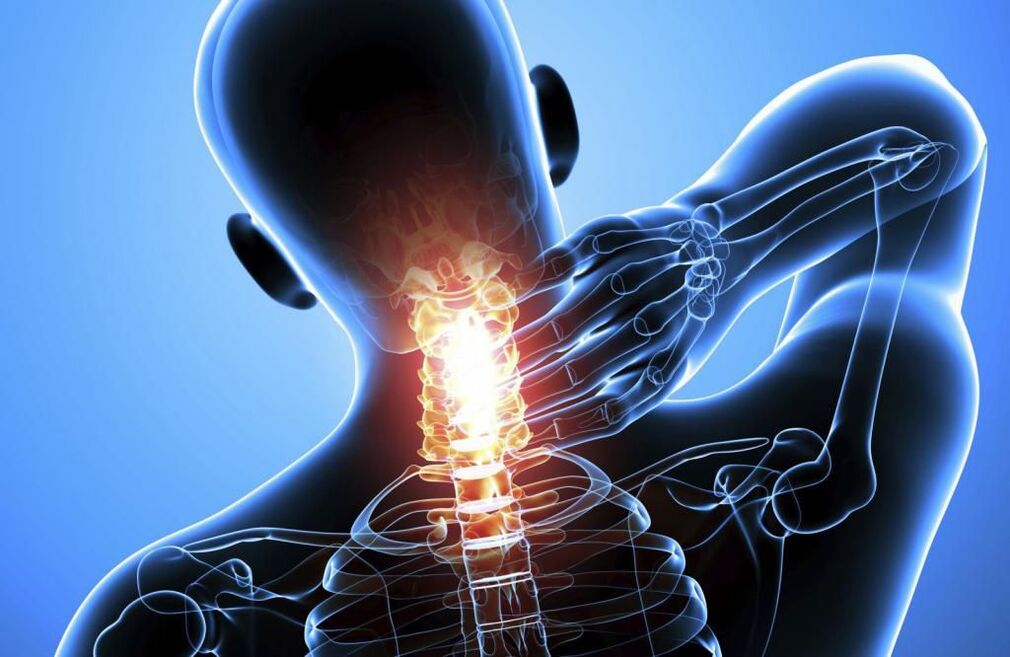
Symptoms of osteochondrosis of the cervical spine
Osteochondrosis of the cervical spine is a disease that causes degenerative changes in the intervertebral discs.First, the intervertebral discs, which are cartilaginous rings with jelly-like contents, dehydrate.This is usually the result of a sedentary lifestyle, prolonged work at the computer, poor posture, neck injuries and a number of other factors.
This leads to a decrease in the strength of the collagen fibers that form the annulus fibrosus discus.As a result, its thickness gradually decreases, which becomes the main reason for the development of symptoms characteristic of cervical osteochondrosis:
- Neck pain of varying intensity;
- Headache, dizziness, loss of consciousness due to injury to the cervical arteries, which run directly through the vertebrae, i.e.h.development of vertebral artery syndrome;
- fluctuations in blood pressure;
- radicular syndrome caused by pinching of the spinal roots, which is accompanied by a radiation of pain from the neck through the arms, to the hands and fingers, head, shoulders, impaired sensitivity in these areas, the appearance of goosebumps, numbness, etc.;
- a reduction in the range of motion of the neck, the appearance or increase of pain when performing certain movements;
- increased fatigue, reduced performance;
- Tinnitus, reduced visual acuity, development of difficult-to-treat ENT diseases.
There are 7 vertebrae in the cervical spine.Osteochondrosis most commonly affects the intervertebral discs between the 5th and 6th and 6th and 7th vertebrae.
In such situations, you need to contact a neurologist who will prescribe an MRI.The results of this examination make it possible to accurately identify osteochondrosis at any, even at the earliest stage of development, and select treatment.
Stages of development
In general, there are 4 stages of development of osteochondrosis:
- Grade 1 – pathological changes in the intervertebral disc are just beginning, so the symptoms are mild and are observed only from time to time.In such situations, treatment will be as effective and simple as possible.
- 2nd degree - changes in the intervertebral discs become more pronounced, which leads to the appearance of aching pain in the neck, which occurs and intensifies when moving the head.
- Grade 3 – Pain becomes almost constant and can be complicated by the development of vertebral artery syndrome, as well as the formation of protrusions and intervertebral hernias.
- 4th degree - the intervertebral disc is so destroyed that movement in the affected spinal segment is almost completely impossible.In this case, severe pain is observed, radicular syndrome often develops and one or both vertebral arteries are pinched, which leads to the appearance of characteristic symptoms.
Treatment of cervical osteochondrosis
Therefore, the tactics of treatment of cervical osteochondrosis depend on the severity of the degenerative changes in the intervertebral discs, the patient's age and his individual characteristics.Therefore, it is always developed for each patient separately, but is always aimed at solving the following problems:
- Elimination of unpleasant symptoms that worsen the patient's quality of life;
- improving blood circulation in the neck;
- Improvement of metabolic processes in the affected area;
- Elimination of the causes of degenerative-dystrophic changes in the intervertebral discs;
- Reducing the risk of developing complications of osteochondrosis, i.e.h.Protrusions, intervertebral hernias, spondylosis, etc.
In general, the use of different therapeutic measures is indicated at every stage of the disease development.If in the 1st phase it is enough to adjust the lifestyle and carry out exercise therapy, in the 2nd phase a more comprehensive effect is required, which additionally includes taking a number of medications, conducting manual therapy sessions, using orthopedic aids, etc.
However, patients must understand that it is impossible to achieve reverse regression of degenerative-dystrophic changes that have already occurred, especially when osteochondrosis is diagnosed at stage 2 or higher.In such situations, treatment is aimed at improving the patient's well-being and stopping further progression of the disease.Sometimes only in the 1st stage of osteochondrosis it is possible to completely correct the situation, but at this stage of development the pathology is diagnosed extremely rarely, since patients perceive slight discomfort in the neck only as a sign of fatigue and do not seek medical attention.
In more severe cases, the treatment of osteochondrosis of the cervical spine is even more complex and lengthy.In any case, it is carried out under the supervision of a neurologist with regular follow-up examinations and adjustment of therapy depending on changes in the patient's well-being.
Correction of lifestyle
All patients diagnosed with cervical osteochondrosis are recommended to make certain changes in their lifestyle.In any case, these recommendations vary depending on the characteristics of the person's professional activity and a number of other factors.
The vast majority are recommended to increase their physical activity and take a break from work at least every hour to warm up if they sit.In cases where the patient actively engages in sports, it is recommended to reduce the load on the cervical spine.This is proven to avoid running, jumping, weightlifting and wrestling.
People who are overweight are additionally recommended to take measures to reduce excess weight and adjust their diet.If osteochondrosis has already occurred, it is important that the diet covers the body's daily needs as fully as possible.Therefore, it is worth giving up fast food and semi-finished products and making your diet more rational.It is therefore worth designing your menu so that half of your diet consists of vegetables and fruit and also contains sufficient proteins.
Drug treatment of cervical osteochondrosis
Drug therapy is primarily aimed at eliminating the unpleasant symptoms of osteochondrosis of the cervical spine.As a rule, it is complex and involves the use of drugs from different groups, each of which solves specific problems.It is therefore developed separately for each patient.
NSAIDs
Nonsteroidal anti-inflammatory drugs, or NSAIDs, are a broad group of medications that have not only anti-inflammatory but also pain-relieving properties.They are available in various dosage forms, including tablets, capsules, ointments, gels and creams, and solutions for intramuscular administration.NSAIDs should only be used when necessary, i.e.h.if severe neck pain occurs.
If pain is severe, NSAIDs can be administered intramuscularly.
The disadvantage of oral drugs from the NSAID group is their irritating effect on the gastric and duodenal mucosa.This can lead to a worsening of the course of diseases of these organs, especially gastritis and stomach ulcers.To reduce such risks, proton pump inhibitors are prescribed in combination with them.
There are drugs that have a more gentle effect on the gastrointestinal tract and therefore are often prescribed to relieve pain and inflammation in osteochondrosis.In addition, more advanced drugs have already been developed, which are characterized by a selective effect and are often prescribed even for osteochondrosis, but are more expensive and are not available to all patients.
Corticosteroids and injections (blocks)
Corticosteroids are hormonal drugs prescribed to patients with severe inflammatory processes.They can cause a number of undesirable consequences with prolonged use and therefore are prescribed in short courses in the most difficult cases.As a rule, the use of injection solutions is indicated because these drugs are much better tolerated by the body when administered in this way and are less likely to cause side effects.
Corticosteroids are often used in combination with local anesthetics for blockages, i.e.h.to quickly relieve very severe pain by introducing the prepared mixture into special places near the passage of the spinal nerves.The procedure requires certain skills and dexterity and therefore can only be carried out in medical institutions by specially trained medical personnel.Otherwise, the likelihood of undesirable consequences and complications is very high.
It is recommended to perform blockages no more than four times a year.
Muscle relaxants
Muscle relaxants are a group of drugs used to eliminate reflex muscle spasms caused by an acute inflammatory process.This often occurs with cervical osteochondrosis and causes severe pain in the neck, further aggravating the situation.
Vitamins
Since osteochondrosis creates essential conditions for compression of the spinal roots, taking vitamin complexes, which primarily contain B vitamins, is often indicated.They are directly involved in the transmission of nerve impulses, which is particularly important in the development of radicular syndrome.
Chondroprotectors
Chondroprotectors are drugs around which there is a lot of controversy.They are based on substances that the body uses to restore damaged cartilage tissue, which determines the indications for their use in cervical osteochondrosis.At the same time, however, there is no convincing evidence of their effectiveness in advanced forms of the disease.In the early stages of osteochondrosis, they actually have a positive effect on the condition of the intervertebral discs, which leads to an improvement in the patient's well-being.And in later stages they can only help inhibit the further progression of degenerative changes in the intervertebral discs.
Chondroprotectors are produced in the form of powders for the preparation of solutions, capsules, products for topical use, as well as solutions for intramuscular administration.The greatest positive effect was observed in the latter.
Current products
These are precisely the drugs that come in the form of a gel, cream or ointment and which patients often begin to use when signs of cervical osteochondrosis appear.They have different effects, including anti-inflammatory, analgesic, warming or, conversely, cooling and locally irritating.
Often these products contain NSAIDs, so they relieve pain, but are especially effective in the early stages of osteochondrosis.The components of such drugs can also be menthol, pepper extract, snake or bee venom.
Local irritants work on the principle of irritating the nerve endings of the skin, which reduces the intensity of pain and increases blood circulation in the area of application.However, such funds are effective only in the initial stages of the development of cervical osteochondrosis.
Preparations to improve microcirculation
Drugs in this group are used to improve the quality of blood circulation, which is especially necessary for vertebral artery syndrome.A number of drugs have a vasodilating effect, which improves brain nutrition and helps eliminate tinnitus, headaches and dizziness.However, without effective elimination of the pressure factor on the vertebral artery, such treatment gives only temporary results.
Movement therapy
Physiotherapy is the basis for the treatment of osteochondrosis of the cervical spine.Today there are many different proprietary and generally accepted methods of exercise therapy for cervical osteochondrosis, but patients should understand that there are no universal exercises.A set of exercises must be selected individually by a specialist, taking into account not only the stage of development of degenerative-dystrophic changes, but also the patient's age, the nature of existing concomitant diseases, the presence of root syndrome or compression of the vertebral arteries.Therefore, different exercises may be indicated for the same patients with approximately the same changes in the intervertebral discs.
In general, physiotherapy pursues the following goals:
- strengthening the neck and upper shoulder girdle muscles;
- Activation of blood circulation in the affected area, which contributes to the restoration of the fibrous rings of the intervertebral discs;
- Normalization of muscle tone.
It is necessary to carry out exercise therapy every day.First of all, it is best to attend special groups or work individually with an exercise therapy teacher.This will allow you to 100% master the technique of performing each proposed exercise so that its implementation brings the maximum benefit.The specialist will help you choose the optimal load and develop a program to increase it, taking into account the level of physical development of the patient.
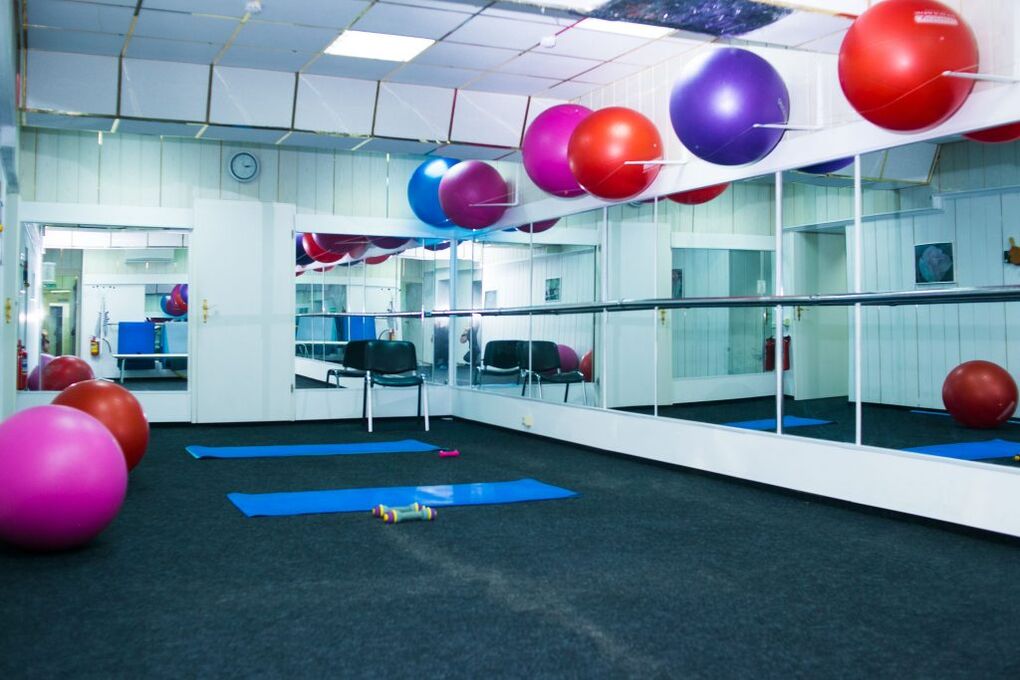
In the future, patients will be able to practice exercise therapy independently at home.At the same time, it is important to approach the matter with full responsibility, to carry out the exercises slowly, without haste and in comfortable conditions.However, if pain occurs at any time during exercise, you should immediately stop the exercise that caused its occurrence and consult your doctor to determine the causes and correct the exercise therapy program for cervical osteochondrosis.
During exercise therapy, it is forbidden to make sudden, strong movements, turn your head, or perform exercises for pain.In such situations, there is a high risk that existing changes in the intervertebral discs will worsen instead of achieving the expected benefits.
Swimming has a very positive effect on the condition of the spine.This is exactly a sport in which the intervertebral discs are not put under strain, but the back and neck muscles are actively used.This effectively strengthens the muscle corset and acts as a natural support for the spine.Therefore, patients are recommended to visit the swimming pool 2-3 times a week if possible.
Manual therapy for cervical osteochondrosis
Manual therapy is one of the most effective methods of treating cervical osteochondrosis, as it allows you to influence not only the muscles and soft tissues, but also the spine itself.However, it is very important to approach the choice of a chiropractor responsibly, as incorrect or excessive influence can lead to a deterioration in the patient's condition and even the development of complications.Such a specialist must not only have higher medical education and a license to practice manual therapy, but also have a good understanding of the peculiarities of anatomy and osteochondrosis, as well as sufficient experience.
Do not confuse manual therapy with therapeutic massage.The differences between these types of manual therapy are significant, as therapeutic massage only affects soft tissues, while in manual therapy the doctor also works on the spine.
Therefore, each manual therapy session begins with stroking, which allows you to prepare the skin for more active subsequent effects.In the future, rubbing, kneading and squeezing techniques will be used, with which you can activate blood circulation in the collar area, neck and upper back area.As soon as the skin and muscles are sufficiently warmed and the patient is relaxed, the doctor begins to carry out mobilization and manipulation techniques.They imply performing rotations with oscillating movements, thrusts in the direction of the greatest limitation of movement, which leads to increased mobility of the spine and the elimination of functional blocks.
Thanks to qualified manual therapy it is possible:
- normalize the position of the vertebrae, thereby eliminating increased pressure on the intervertebral discs and creating favorable conditions for their restoration;
- eliminate pain caused by cervical osteochondrosis and its complications;
- Bring overly relaxed muscles to normal tone and relax spasmodic muscles.
- increase neck mobility;
- eliminate pressure on the vertebral arteries and thereby normalize blood flow to the brain;
- Eliminate compression of the spinal roots and thereby normalize the conduction of bioelectric impulses to the organs for whose innervation they are responsible and relieve pain.
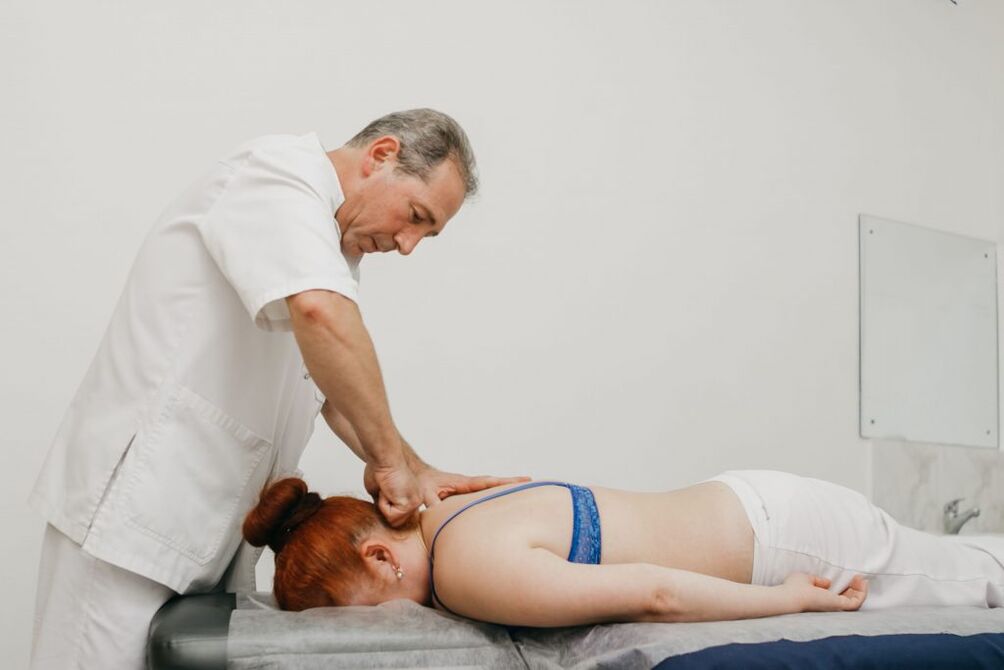
Particularly noteworthy is the author's method of manual therapy.Special, patented percussion techniques are used, which make it possible to achieve a pronounced result not only on the neck area affected by osteochondrosis, but on the entire body after the first session.Not only does pain and other symptoms of illness disappear, but the function of all organs also improves and the immune system is strengthened.The second and subsequent sessions enhance the positive effect and consolidate it, which ensures the longest possible period of remission if other medical recommendations are followed.
Self-massage
To improve their well-being, patients can regularly perform neck self-massage to relieve the feeling of fatigue and relieve pain.To do this, sit in a comfortable position and try to relax your neck muscles.Then perform stroking movements with your palms, gradually moving to circular rubbing, covering the shoulder area.All movements are carried out from the spine without sudden and strong pressure.In this case, you can use local anti-inflammatory drugs recommended by your doctor.
Physiotherapeutic treatment
Physiotherapy is indicated outside of the acute inflammatory process.This allows you to consolidate the achieved treatment results and further improve the patient's condition.As a rule, a course of 10-15 procedures is prescribed, which are selected separately for each patient.It could be:
- Electrophoresis – involves the use of electric current to ensure deeper penetration of the specified drugs.
- Magnetic field therapy – helps to activate blood circulation in the area of influence and stimulates the course of metabolic processes.In addition, magnetic therapy sessions have an analgesic effect and help eliminate swelling.
- Laser therapy has an anti-inflammatory, vasodilating effect, which leads to a reduction in pain intensity.
- Ultrasound therapy is a method of physiotherapy based on the positive effect of ultrasound waves on the body.They help to reduce the sensitivity of the nerve endings and also have an anti-inflammatory and pain-relieving effect.
- Diadynamic currents – procedures lead to pain relief, improve tissue nutrition, have a positive effect on muscles and help eliminate inflammation.
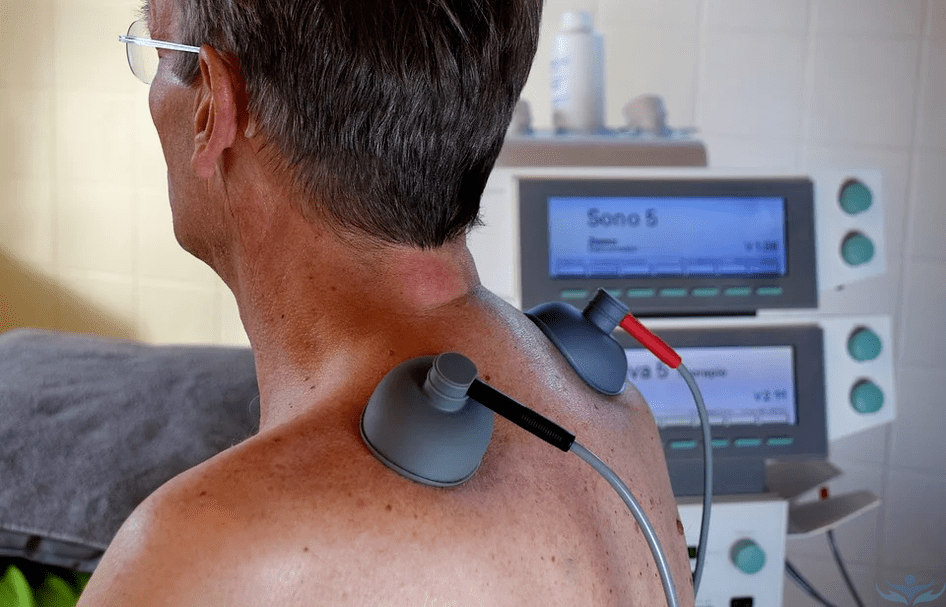
Traction therapy
If the vertebrae come together due to the flattening of the intervertebral discs, traction therapy using a Glisson sling is indicated.The essence of the method is to apply a precisely adjusted tensile load to the cervical spine using a special device that fixes the head and loads it on the opposite side.Such interventions help to increase the distance between the vertebrae, which leads to a reduction in pressure on the intervertebral discs and creates favorable conditions for their recovery.However, such therapy can only be prescribed by a doctor.
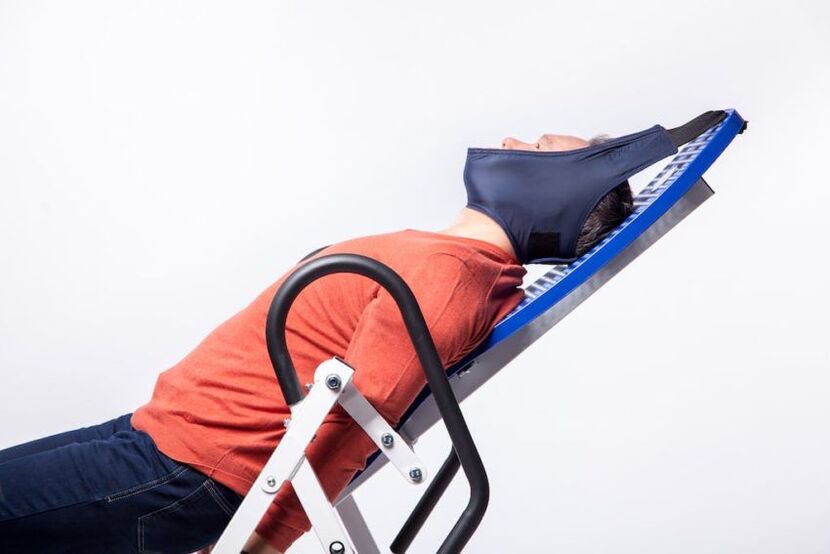
Needle applicator
The Iplicator is a simple and inexpensive means of foot reflexology massage in the neck area.This may be a spiked plate placed under the neck, or a similar device but in the form of a roller.The tingling sensation of the thorns irritates skin receptors, resulting in more active blood flow to the affected area.
Some patients note a reduction in neck pain after using the applicator, as well as an increase in performance, improved sleep quality and restoration of neck mobility.However, if you have skin changes in the affected area or vascular diseases, you should not use a needle applicator.
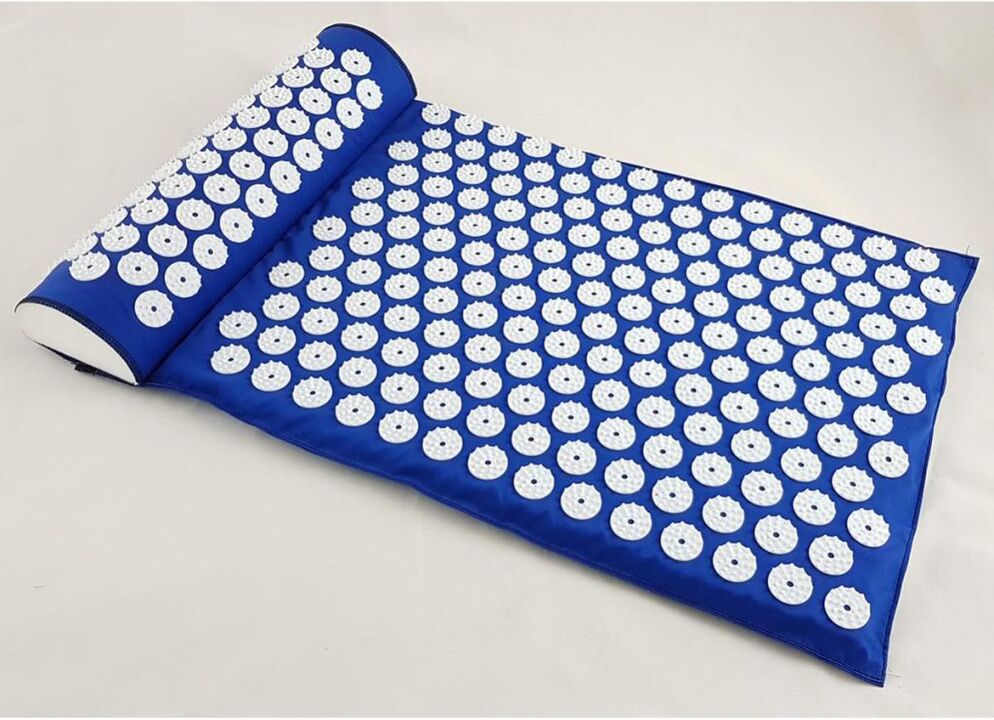
Orthopedic devices
To reduce the load on the cervical spine, it is recommended to change the mattress and pillow to orthopedic mattresses, since sleeping on an uncomfortable pillow during sleep leads to additional compression of the vertebral arteries and nerve trunks.Orthopedic products do not have this disadvantage and ensure the maintenance of the physiologically correct position of the spine along its entire length, thereby slowing down the progression of existing osteochondrosis.
However, it is important to choose the right pillow and mattress so that they correspond to the individual characteristics of the patient and contain appropriate filling.Thanks to them, it will also be possible to improve the quality of sleep and wake up cheerful and rested in the morning.
Additionally, some patients are recommended to wear a Shants collar.It is a removable orthopedic device that allows you to fix the neck and significantly reduce the load on the cervical spine, for example when working at a computer or after an injury.The collar is put on before the expected load on the neck, but must be removed while sleeping and resting.They differ in design, height and degree of fixation, so only the attending physician can choose the optimal one.
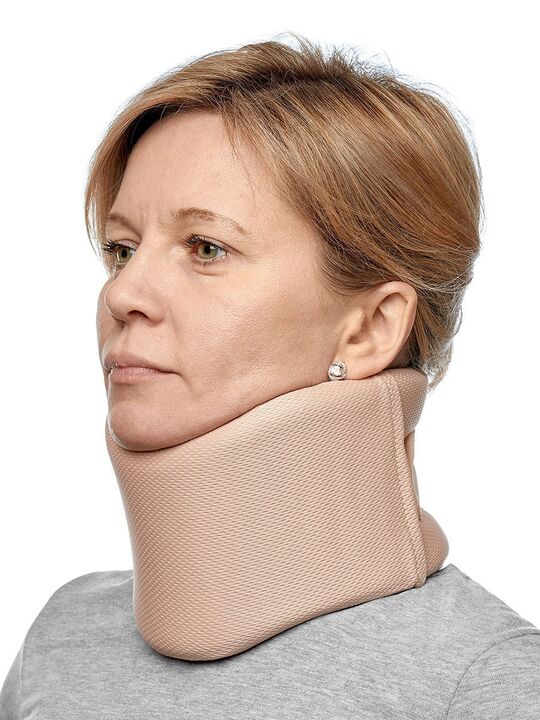
Therefore, treatment of cervical osteochondrosis can be quite lengthy and complex.You should be prepared for this, because there is no other way to stop the development of changes in the intervertebral discs, avoid the development of complications and the need for surgery.However, in most cases, patients' condition improves in the first few weeks of treatment.At the same time, it is important not to self-medicate, but to contact a neurologist, since only a qualified specialist can determine the degree of osteochondrosis and select the most appropriate treatment for the disease for a particular patient.

















































